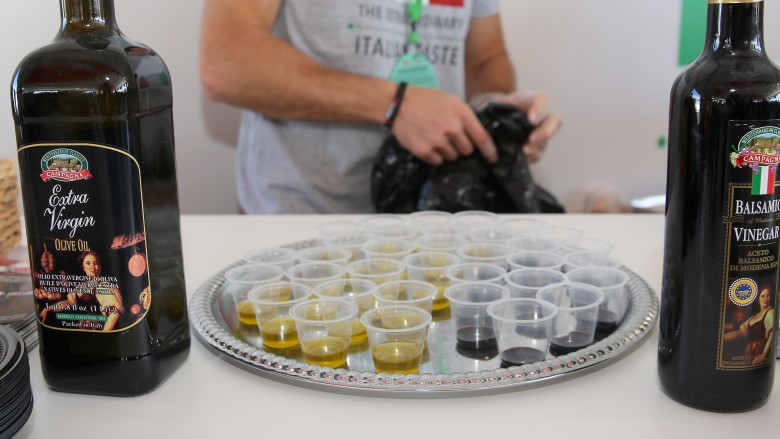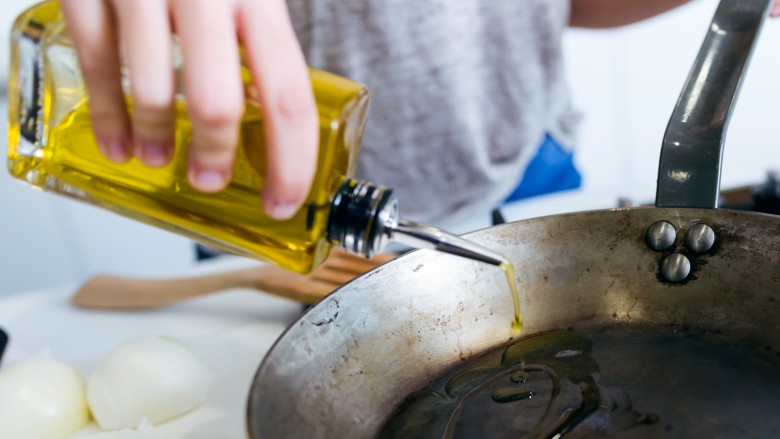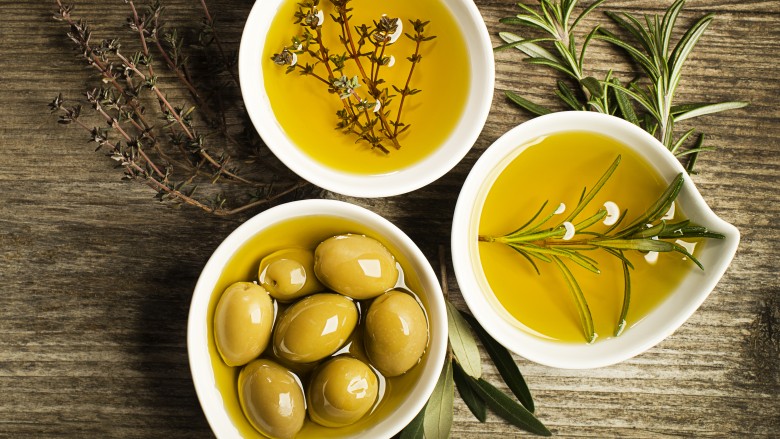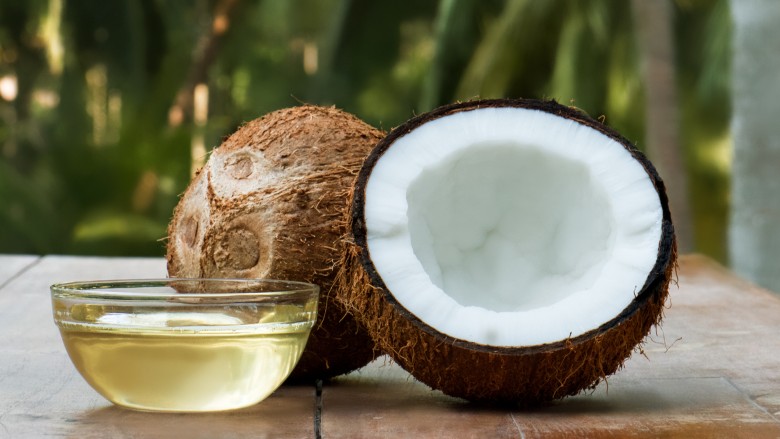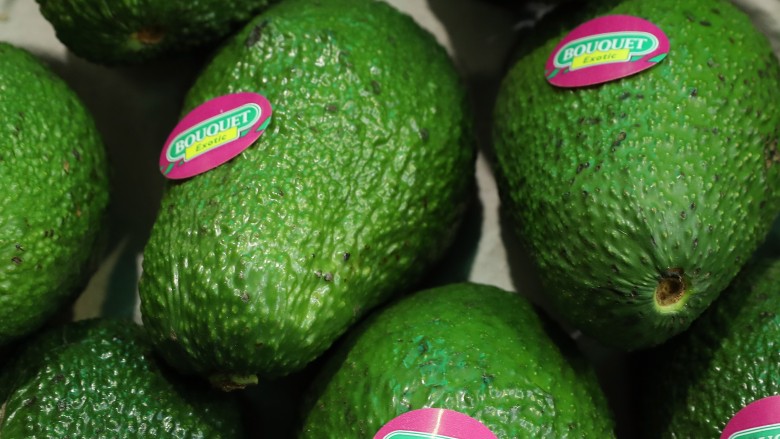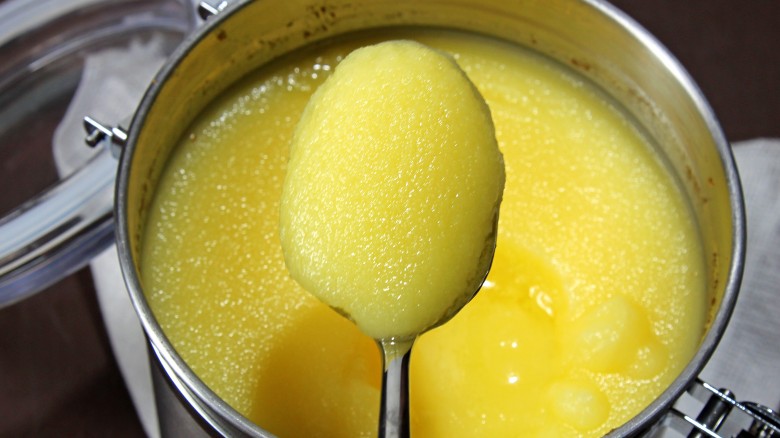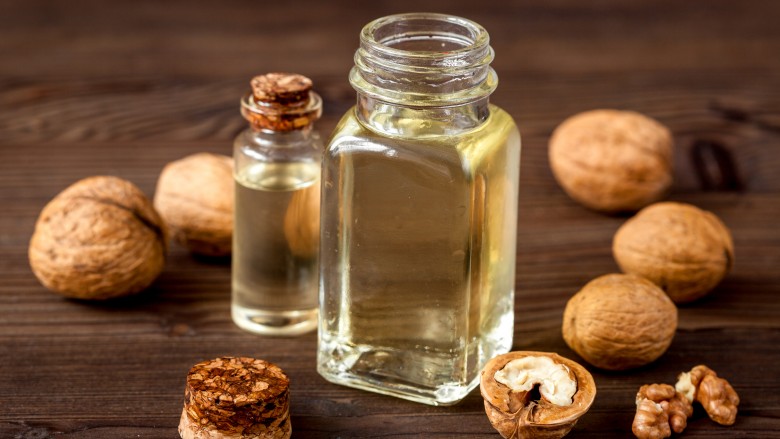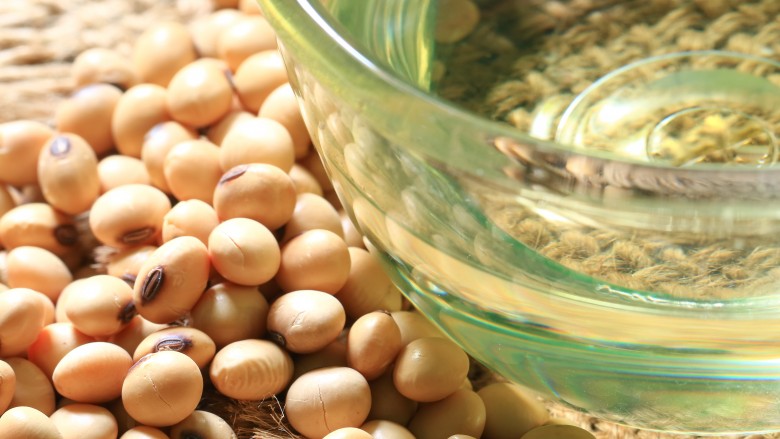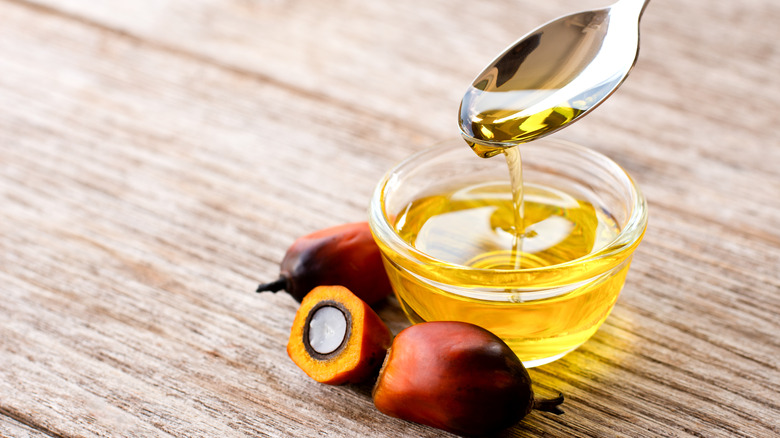How To Choose The Right Oil For The Job
intro
"Oily" food has become so synonymous with "unhealthy" that entire generations of people now believe it's totally acceptable to cook pancakes dry in a non-stick pan. Perfectly well-meaning souls use "lite" dressing as a marinade.
Practically speaking, oil is a much better medium for conducting cooking heat than air, and it helps caramelize the cooked surface of food, giving it a pleasingly crisp feel in your mouth. The taste and texture of oils can influence the food just as much as the seasonings, so it pays to carefully consider your options. It's possible that even though you perfectly execute a recipe, you're destroying the final flavor of a dish simply by choosing the wrong oil.
Listed below are several oils you may want to consider using, and a few to avoid. Whenever possible, we've sourced nutritional information to help you make the right choices for your diet, as well as provide some background information on what all these different kinds of fats do.
The types of fat
On average, a teaspoon of oil clocks in at 130 calories with 13 grams of fat, if you drink it straight. Rather than sheer numeric value, it's often the specific composition of those 13 grams that really makes or breaks the health value of an oil. The kind of fats you eat affect what variety of chemicals your body produces to digest it. Mono and poly unsaturated fats (MUFA and PUFA) trigger the production of high-density lipoproteins (HDL), while saturated fats & genetics trigger the production of low-density, or LDL proteins. You'll hear HDL referred to as "good fats" while LDL is "bad," but the science is less clear cut.
In the past, experts believed all saturated fats were dangerous, but many doctors now question this assumption. As it stands now, the link between saturated fats and LDLs is tenuous at best, as studies have failed to show a clear link. On the other hand, the link between trans fats and heart disease is thoroughly established. Whenever possible, avoid hydrogenated oils, instead choosing less processed virgin or cold-pressed varieties.
Smoke point
An oil's smoke point is a function of the ratio of saturated to unsaturated fats, so choose one rated 50 degrees higher than your cooking temperature. Chemically speaking, unsaturated fats are more reactive, therefore breaking down and oxidizing faster than saturated fats. Polyunsaturated fats, with multiple double-bonds in their structure, are even more reactive than monounsaturated fats. Saturated and hydrogenated fats hold up extremely well under extended periods of high heat.
Once an oil starts to smoke, it produces toxic compounds and lowers its own smoke point, resulting in more burning. Knowing that, it would make sense to cook with only highly processed, heat resistant oils, right? Sadly, many of the chemical compounds that make virgin oils heat sensitive are the same ones responsible for flavor and nutrition, making the choice a balancing game between temperature resilience and nutrition. Here's a handy chart that organizes oils by smoke point and best uses. Oh, and, skip the PAM on the stove top — it destroys non-stick surfaces.
Olive oil
When it comes to cost, availability, and flexibility of use, it's hard to beat a workhorse like extra-virgin olive oil. From salad dressing to saute, short of deep-fat frying there aren't many applications olive oil can't handle. Consisting of 77 percent monounsaturated fats, nine percent polyunsaturated, 14 percent saturated, it has a smoke point ranging from 375-475 degrees Fahrenheit, depending on processing method.
While its smoke point might seem low, the chemical structure of its monounsaturated fats holds up under continued heat while only losing a small portion of its nutritive content. Because it's so popular, many families purchase bulk quantities that last for months. If you do, consider portioning it into a smaller bottle, such that you aren't exposing all of the oil to all of the heat and air every time you need to grease a skillet.
It also makes a good base for flavored oils, which are a popular salad dressing and culinary gift.
Coconut oil
Widely praised as both the world's most delicious skin crème, and the healthiest industrial lubricant you can also make cookies with, coconut oil clocks in at an overwhelming 85 percent saturated fat. MUFA and PUFA make up six percent and two percent, respectively.
The prominent coconut flavor makes this an excellent companion to both sweet and savory dishes. Saute chicken and vegetables for restaurant-grade curries, or mix it into cookie dough for a tropical kick. Its 450 degree smoke point makes it an ideal frying oil, as well, although tight budgets might find it cost prohibitive. A good rule of thumb is, anything that would benefit from the addition of peanut butter would also do well cooked with coconut oil.
Its saturated fat content has earned it a bit of a negative reputation with many nutritional experts, but the science is far from settled. If coconut oil is so unhealthy, shouldn't that have a profound impact on the populations who use it the most? As it is, several promising studies have shown links between consumption of coconut oil-derived nutrients in preventing weight gain. Lauric acid, one of the more common types of fat, helps diners feel full faster, meaning they eat less each meal.
Canola oil
The consensus from the medical community seems clear: canola oil is heart-healthy. With a lighter profile than olive oil at 61 percent MUFA, 32 percent PUFA, and half as much saturated fat, this light oil is a doctor-approved winner. It's got more omega-3s than most conventional plant oils, the 400 degree smoke point is useful for many types of cooking, its relatively light flavor and texture make it ideal for delicate marinades, and it's cheap enough that even high quality, cold-pressed varieties won't break the bank.
Its stability makes it a popular deep fry oil, but it's equally at home in a skillet. Mix in a little garlic salt and brush it on sliced vegetables before broiling them for a fresh-off-the-grill snack, any time of year. Grease a wok with canola to do the brunt work of cooking, and add a dash of sesame oil to complete the dish once the heat's off.
Avocado oil
If you have the financial means to eat morally and can afford $30 for 16 ounces of food grease, have we got the bandwagon for you. Pressed from avocado seeds your friends failed to sprout on their windowsills, avocado oil's nutrient profile is comparable to olive oil, but with more vitamin E and antioxidants. It has a smoke point of 400 degrees, 71 percent MUFA, 13 percent PUFA, and 12 percent saturated fats.
While it can certainly take the heat better than most oils, sheer cost relegate this oil to low-intensity uses only. Basted onto fish and dripped into soups, the nutty aroma and pleasing texture make this an ideal salad partner as well. Whip it into homemade mayo, or pour it over fresh ground herbs for an experimental twist on pesto. Serve it over freshly baked crusty bread with a single slice of tomato and forget delivery pizza even exists.
Ghee
In order to make butter last longer in the humid heat of southern India, ancient Indians developed a method of cooking it in order to remove water, sugar, and milk fats liable to go rancid. In other words, "clarifying" the butter, by removing everything that made it opaque. The resulting semisolid is known as "ghee" and it packs a walloping 65 percent saturated fats, 25 percent MUFA, with five percent PUFA.
Thankfully, the vast majority of the saturated fat in ghee is easy on the body, and it's safe for individuals allergic to lactose or caesins, as they are filtered out during the cooking process. This leaves it with an average smoke point of 450 degrees, roughly the same as peanut oil. Despite this heat-intensive process, ghee is still rich in vitamins D, K, and E, along with other essential nutrients all packaged in a rich, nutty spread. Much of the positive health benefits found in coconut oil also hold true for the saturated fats left in ghee.
As a mainstay of Indian cooking, it's the key ingredient in highly elastic naan dough. It provides the perfect medium for toasting aromatic spices, and because some varieties have removed all dairy content, it can be both pareve and halal. Baste it on meat for irresistable browning, or fry up a batch of dairy and gluten free onion pakodas to share with your vegetarian friends.
Supplemental oils
In addition to the cooking oils mentioned above, there are a handful of nutritionally dense, low smoke-point oils that make wonderful ingredients, even if they can't handle the heat.
Flax oil has a high portion of omega-3 fats and B vitamins, similar to what's found in fish. Its toasted, nutty flavor works well when mixed with other grains in granola or as a salad dressing. It's slightly cheaper and more shelf-stable than walnut oil, but walnut's rich flavor is hard to beat.
For a holiday twist on a traditional Italian bread dip, consider mixing either nut oil with powdered cinnamon, cloves, and nutmeg drizzled over oven-warm banana bread. Or, drizzle it into your instant oatmeal for all-day energy. If your sandwich is dry, consider adding a few drops to the top bread.
Soybean oil
Think twice before reaching for the soybean oil. As bad as industrial soybean farming is, the oil itself isn't much healthier. Its high omega-6 content can compete with healthier fats and even exacerbate underlying dietary imbalances. With 16 percent saturated fat, 23 percent MUFA and a pleasing 58 percent polyunsaturated fats, it seems healthy on the surface. However, many oils contain extremely high amounts of trans fats, having been partially hydrogenated for stability.
Its high smoke point and low cost make it perfect for industrial batch fryers, but the processing required to reach that high point destroys most of the dietary compounds in the oil. Its neutral taste doesn't detract from its functionality in a skillet, but there are far better options
Cold-pressed soybean oil is shelf-stable for up to a year, but it smokes at 230 degrees, half of its normal of 450, and it's likely to be thoroughly hydrogenated as well. It could grease a pan for low-heat baking, but won't hold up on the stove top.
Palm oil
There are several reasons palm oil should be your last choice in oils. Palm oil is squeezed from the bright orange pigment of the oil palm fruit, with or without the kernel. It owes its vivid colors to high concentrations of carotenes, the same healthy chemical found in turmeric and carrots. Cold-pressed products are often marketed under the name "red palm oil" to indicate higher concentrations of the stuff.
Oils pressed with the kernel have a much higher saturated fat content than oil pressed just from the fruit. Palm kernel oil has a whopping 84 percent saturated fat, with 2 percent PUFA and 15 percent MUFA. While coconut oil was linked to early feelings of satiety, some acids common to palm oil may actually reduce feelings of fullness, leading to overeating and weight gain.
If that alone wasn't bad enough, the explosive growth in the palm oil market has ushered in a wave of stomach-turning ecological and human rights abuses. Palm plantation in Malaysia are one of the top four markets for child slaves, using them to pick the fruit from trees built on illegally clear-cut rainforest. Loss of habitat has lead to massive die-offs of birds and primates all across Asia. Palm oil simply isn't good enough compared to other oils to warrant all this destruction.

